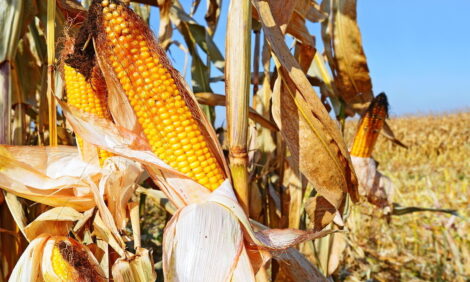



Frost Seed Clover in 2012
An important forage option available to cattlemen is the addition of clover to cool season grass pastures. The addition of clover to grass pastures will improve the quality of forage that cattle graze, dilute infected tall fescue and also supply nitrogen via nitrogen fixation, writes Dr Mark A. McCann, Extension Animal Scientist, VA Tech. Recently, the cost of commercial nitrogen has rearranged the priority list with clover’s ability to fix nitrogen perhaps being the most economically important advantage.
Nitrogen is “fixed” in clovers through a symbiotic relationship with rhizobium bacteria that infect roots. The plant provides energy for the bacteria and bacteria provide the “machinery” necessary to convert atmospheric nitrogen to a form available to plants. Most people picture a ‘conduit’ that transports nitrogen directly from clover to grass. Unfortunately, almost no nitrogen is contributed in this mode. Essentially, nitrogen is supplied to grasses indirectly via the decomposition of the clover root nodules. Nitrogen must then be converted into a form available to plants. This conversion or ‘mineralization’ releases nitrogen slowly- more similar to a time release fertilizer than an application of ammonium nitrate or urea.
After perennial clovers are well established, nitrogen will be released to grasses at a relatively constant rate as nodules decompose. White clover can fix 50-125 pounds of nitrogen per year and red clover can fix 75-150 pounds depending on stand, soil and growing conditions. At current urea prices this practice can translate to $30-$90 per acre in added nitrogen on an annual basis.
Successfully adding clovers can be accomplished by broadcast seeding during the winter months (frost seeding). Experiences in Virginia would suggest that February is the ideal month to frost seed clover. A study conducted at the Kentland research farm by Dr. Ben Tracy in 2009 compared frost seeding and no-till planting of clover. The pastures consisted of mostly tall fescue, bluegrass and some orchardgrass. Clover had not been sown into experimental pastures in recent years. Before establishment of seeding treatments, each pasture was heavily grazed by cattle to remove standing dead vegetation. Pastures were then fertilized with phosphorus (P) and potassium (K) as recommended by soil test. Soil pH was above 6.5 on all pastures so no lime was added. On February 4, 2009, one half each pasture was sown with a mixture of red (Juliet), ladino white (Pinnacle) and white clover (Kopu II) using a broadcast seeder. On March 10th, the remaining half of each pasture was planted with the same legume mixture using a no-till drill. The seeding rate was 4, 2 and 2 lbs/ac. for red, ladino and white clover, respectively. Table 1 contains the percent ground cover of clover from April – August. The clover component in pastures increased more than 20 fold from April to August 2009. Broadcast frost-seeding and no-till drilling were equally effective for establishing clover.
Percent Ground Cover Occupied by Clovers During 2009 Growing Season

Dr. Tracy suspects the successful clover establishment was related to a combination of factors:
- Heavy, mob grazing in winter that reduced standing dead vegetation and helped seedling emergence.
- Timely frost seeding during the first week of February.
- Aggressive rotational grazing in spring that simultaneously reduced grass competition and allowed clovers to grow enough to establish.
- Good soil fertility (adequate phosphorus, potassium, and pH) to stimulate clover growth.
- Rainfall, which was abundant during the 2009 growing season.
Cattlemen interested in adding clovers to their cool season pastures need to plan ahead for success.
- Select pastures which are closely grazed to insure good seed contact. This typically works well to follow behind strip grazed areas of tall fescue.
- Select pastures with low levels of weed pressure. Most herbicides will eliminate clovers.
- Soil test to insure that pH, potassium and phosphorus are adequate for clover establishment.
- Plant a combination of white, red and native clover to insure a diverse stand. Different clovers will produce more growth at different times.
- There are more grazing tolerant varieties of ladino clover available in the market if persistence has been an issue.
- Broadcast seed in early February - March when soil is still freezing and heavy to insure good incorporation
- Manage the spring growth of grass in overseeded pastures to reduce grass competition with the establishing clover
For more details refer to VCE publication Winter Seeding Methods to Establish Clover in Permanent Pasture (http://pubs.ext.vt.edu/418/418-022/418-022_pdf.pdf). The addition of clover is an economical method to increase the productivity and quality of fescue pastures.
February 2012



